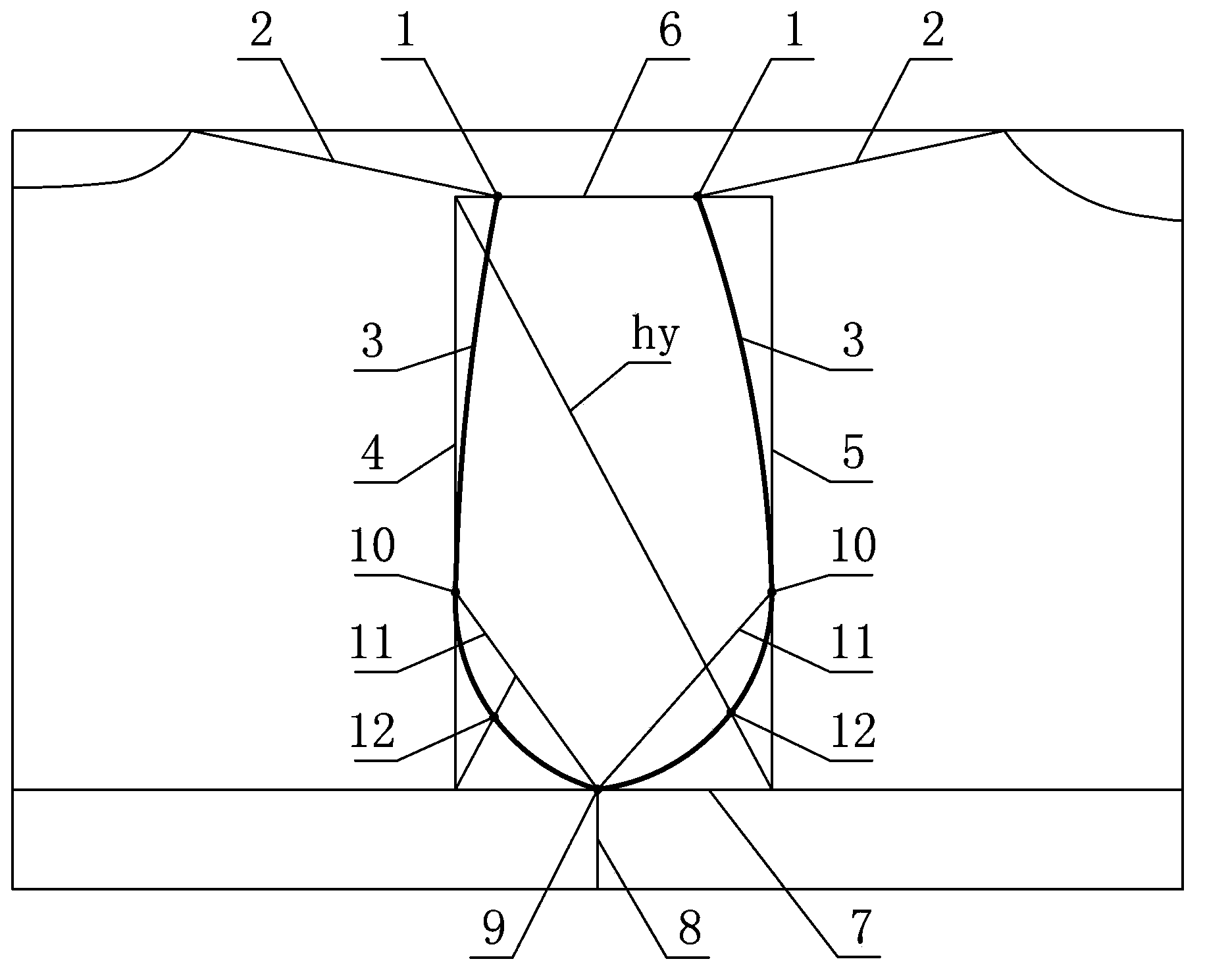Original number tailoring method for clothing armhole
An original number cutting method and armhole technology, which is applied to clothing, tools for sewing clothes, clothing, etc., can solve the problems of time-consuming, unsatisfactory, and low accuracy of armhole cutting lines.
- Summary
- Abstract
- Description
- Claims
- Application Information
AI Technical Summary
Problems solved by technology
Method used
Image
Examples
Embodiment 1
[0022] In such figure 1 In the illustrated embodiment 1, a method for cutting the original number of the armhole of a garment includes the following steps:
[0023] a. Determine the original number of garments including armhole circumference, chest width, back width, shoulder width, chest circumference and length according to anthropometric data;
[0024] b. Draw the garment part rectangle with the bust / 2 as the width and the garment length as the height. The left side of the garment part rectangle is the center line of the back garment, and the right side is the center line of the front garment. The upper side is the upper flat line, and the lower side is the lower flat line. Draw the front and back collars for the respective coordinate points;
[0025] c. Use shoulder width / 2 to determine the distance from the shoulder point 1 to the center line of the front and back clothes, and shoulder width / 10 to determine the distance from the shoulder point to the upper flat line, and draw ...
Embodiment 2
[0033] In such figure 1 In the illustrated embodiment 2, a method for cutting the original number of the armhole of a garment includes the following steps:
[0034] a. Determine the original number of garments including armhole circumference, chest width, back width, shoulder width, chest circumference and length according to anthropometric data;
[0035] b. Draw a garment part rectangle with chest circumference / 2 as the width and garment length as the height. The left side of the garment part rectangle is the center line of the back garment, and the right side is the center line of the front garment. The upper side is the upper flat line, and the lower side is the lower flat line. Draw the front and back collars for the respective coordinate points;
[0036] c. Use shoulder width / 2 to determine the distance from the shoulder point 1 to the center line of the front and back clothes, and shoulder width / 10 to determine the distance from the shoulder point to the upper flat line, and d...
Embodiment 3
[0045] In such figure 1 In the illustrated embodiment 3, a method for cutting the original number of the armhole of a garment includes the following steps:
[0046] a. Determine the original number of garments including armhole circumference, chest width, back width, shoulder width, chest circumference and length of clothing based on anthropometric data.
PUM
 Login to View More
Login to View More Abstract
Description
Claims
Application Information
 Login to View More
Login to View More - R&D
- Intellectual Property
- Life Sciences
- Materials
- Tech Scout
- Unparalleled Data Quality
- Higher Quality Content
- 60% Fewer Hallucinations
Browse by: Latest US Patents, China's latest patents, Technical Efficacy Thesaurus, Application Domain, Technology Topic, Popular Technical Reports.
© 2025 PatSnap. All rights reserved.Legal|Privacy policy|Modern Slavery Act Transparency Statement|Sitemap|About US| Contact US: help@patsnap.com

